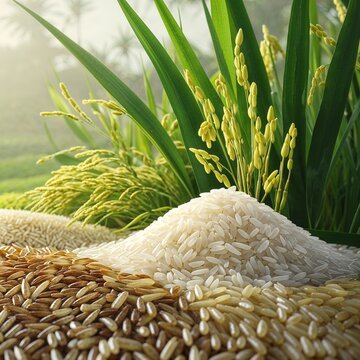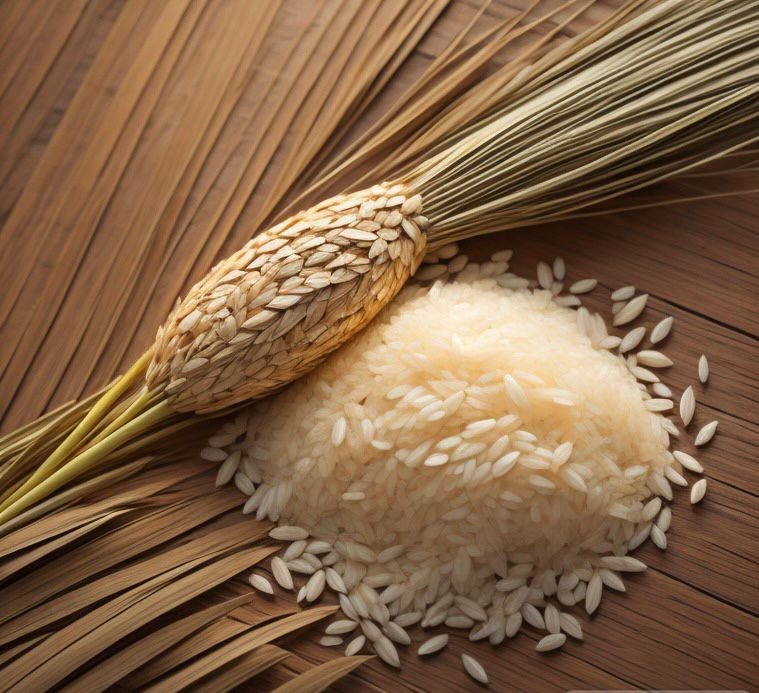Saturday, 9 August 2025

India’s agrarian future hinges on the fate of its two imperious staples—rice and wheat—which together constitute the backbone of national food security, rural livelihoods, and global grain trade positioning. Today, a confluence of climate exigencies, water stress, pest incursions, and yield stagnation compels an audacious reimagining of how these cereals are cultivated, from the paddies of Punjab to the wheat belts of Uttar Pradesh. Armed with cutting-edge seed technologies, precision agronomy, and policy realignments, the nation stands poised to not merely safeguard its grain legacy, but to transmute it into a climate-smart, export-ready, nutritionally enriched bounty for the world.
In the sprawling and complex ecosystem of Indian agriculture, where some 500 seed companies—from nimble regional enterprises to formidable multinationals—compete for influence, a distinguished ten percent stand apart for their world-class research and development prowess. Ajai Rana, Chairman of the Federation of Seed Industry of India, underscores maize’s ascent as one of the great beneficiaries of private-sector innovation, with the industry sowing an impressive two lakh tonnes of hybrid corn this year. Yield ceilings are being audaciously reimagined, exemplified by Corteva’s mustard variety delivering a staggering ten tonnes per acre. Across the Atlantic, eight million acres of rice in the United States offer both competition and inspiration, even as India accelerates the adoption of Direct Seeded Rice (DSR)—a transformative practice capable of conserving scarce water resources, curtailing methane emissions, and reinforcing sustainability. Yet, Rana warns, the Achilles’ heel remains weed control, where the paradox of “weedy rice” outcompeting “weedy rice” continues to defy simple solutions.

For Dr. Bharat Char, Team Lead at Mahyco, Jalna, wheat’s pivotal role in India’s food security demands a synthesis of technological ingenuity and environmental stewardship. With production targets set at 140 million tonnes and productivity goals of 50 quintals per hectare to meet domestic demand, buffer stocks, and export commitments, the stakes are as high as the aspirations. The economic and logistical burdens of manual weeding have galvanised interest in Mahyco’s “Free Hit” technology, designed to decisively vanquish invasive weeds such as Melilotus and Medicago. The parallel adoption of zero-till cultivation not only trims costs but also acts as a natural carbon sequestration mechanism, transforming India’s wheat belt into a vast, unheralded carbon sink.
From Varanasi, Dr. Sudhanshu Singh, Director of the International Rice Research Institute’s South Asia Regional Centre, brings a data-driven yet visionary perspective. India’s 51.4 million hectares under rice cultivation yield 149 million tonnes, providing 60 percent of the nation’s food energy, while 32.7 million hectares of wheat contribute 21 percent of food energy and 17 percent of dietary protein. Yet within the Eastern Indo-Gangetic Plains, yields languish—Uttar Pradesh’s 7.8 tonnes per hectare pales in comparison to Punjab’s 12—further compromised by the fact that 60 percent of wheat is sown past its optimal window.
Singh posits that precise sowing-date optimisation could unlock yield gains of up to 69 percent without any adverse impact on rice productivity, irrigation efficiency, or profitability. Here again, DSR is a linchpin, saving 20 to 25 percent of water while boosting net farm income by $ 100 to 120 per hectare. Seed use efficiency has reached unprecedented levels, with one acre of nursery capable of transplanting 40 acres of rice, while robust crop residue management initiatives promise to underpin a green circular economy for Indian agriculture.

For Dr. A.K. Singh, Former Director and Vice-Chancellor of ICAR–IARI, rice policy is nothing short of strategic statecraft. With six million tonnes of basmati rice alone constituting 22 percent of all agricultural exports, the commodity is both a cultural staple and an economic anchor. Singh’s vision calls for reducing rice acreage by five million hectares while increasing productivity by two tonnes per hectare to maintain output and relieve pressure on groundwater. His advocacy for sustained R&D investment is uncompromising, with biofortification transforming nutritional baselines—pearl millet zinc content, for instance, has leapt from 30 mg to an extraordinary 81 mg. Yet the challenges are real: the northward march of brown rust in wheat, and the strategic vulnerability of over-reliance on international breeding programmes. Singh champions the urgent development of hybrid wheat as a national priority.
From New Delhi, Dr. P.K. Singh, Agriculture Commissioner at the Ministry of Agriculture & Farmers Welfare, alongside Dr. D.K. Yadava, Deputy Director General (Crop Science) at the Indian Council of Agricultural Research, frame the present moment in its historical arc. Since 1950–51, India’s agricultural output has multiplied between threefold and 127-fold, an achievement powered by science, policy, and scale. Today, breeder seed production spans over 2,000 varieties of 60 crops, yielding in excess of one lakh quintals annually.
Biofortification efforts have yielded 149 cereal, 28 oilseed, and nine pulse varieties, while the 2025 launch of the Genome Editing Network Project promises drought-tolerant, low-water-demand lines in rice, finger millet, chickpea, cotton, soybean, and sugarcane. India’s food grain production has reached an all-time high of 353.96 million tonnes—117.5 million tonnes of wheat and 42.28 million tonnes of maize—despite climatic anomalies. Over 16 million hectares are now planted with biofortified crops, notably 13 million hectares of wheat. Yet both leaders sound a note of caution: declining breeder seed indents could imperil future gains, and genetic improvement rates must accelerate to 2.4 percent annually to meet global food demands by mid-century.
Together, these voices—spanning policy, science, industry, and innovation—compose a compelling symphony of ambition. India’s agricultural future, if guided by such vision, will not merely be about producing more grain; it will be about producing it more wisely, nutritiously, and sustainably, with a lighter tread on the planet and a surer hand on the tiller of food security. This is not simply the next Green Revolution—it is the Green Renaissance.